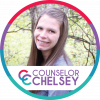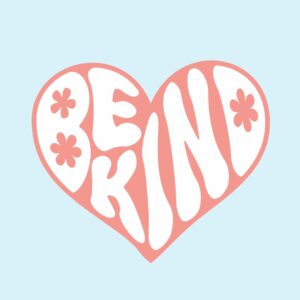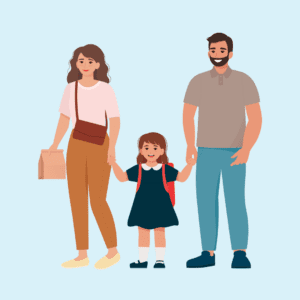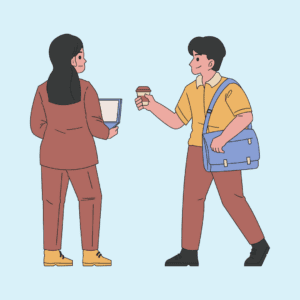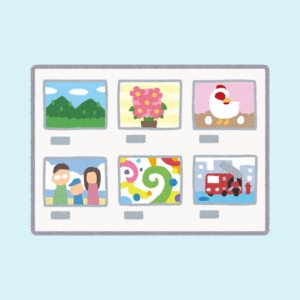Although our work as school counselors can be very rewarding, it can also be frustrating! One of the things I have always found most frustrating is working with children who don’t seem to care at all about how their behavior affects others. They just don’t seem to realize that their behavior can have such a negative impact. When working with these students, it always seemed like I was banging my head against the wall trying to find interventions that would actually work. Finally, I started teaching students about expected and unexpected behaviors. This is now one of my favorite behavior intervention strategies, and has been so helpful for so many of my students!
What do I mean by expected and unexpected behaviors?
Expected behavior is simply behavior that is normal, reasonable and anticipated. Unexpected behavior is behavior that is out of the norm, and is unusual.
This way of talking about behavior is different than how it is normally discussed, in that it doesn’t address behavior as simply “positive” or “negative”, since what is expected can vary from situation to situation. For example, it is expected to speak quietly at a library, but not at a football game. It is expected to raise your hand to speak at school, but it would be unexpected to do that at home.
Why does this make a difference?
One of the key components of talking about expected and unexpected behavior is encouraging students to consider how their behaviors make others feel, how their behaviors lead others to react, or even how their behaviors influence the way that others view/treat them. It is this piece that I believe really gets students to understand that their behavior has serious implications. If they exhibit unexpected behaviors at recess (hitting, not playing by the rules, etc.) it may lead to students not wanting to play with them.
When students begin to understand that their behaviors impact how others view them, they may be more motivated to change their behaviors.
How do I introduce this?
To introduce this concept, I always begin by talking about restaurants they are familiar with. I ask them what they expect when they walk into a pizza restaurant. They usually say things like pizza, cashiers, waitresses, tables, etc. I then ask them how they feel when they walk in. This usually leads to feelings such as happy, calm, excited, etc.
Then, I ask them what would happen if they walked into their favorite pizza place and the workers said they were no longer serving pizza, but were serving seafood instead. How would the students feel about that?
From there I talk about what feelings are evoked from things that are unexpected. Once they have an understanding of what the terms mean, I transfer the discussion over to behavior, and talk about what feelings people have when our behavior is expected versus when it’s unexpected.
How can I teach my students more about this?
Use videos and books!
When reading books to your students, ask them if the behaviors in the books are expected or unexpected. Then, ask them how that behavior would make them feel.
There are also a lot of great videos and movies about unexpected behavior. One of my personal favorites is the movie, Elf. Buddy the Elf is from the North Pole, and when he comes to New York City he does things that are quite unusual. This makes the people around him feel very uncomfortable and uneasy. It affects how others treat him - his brother doesn’t want anything to do with him at first, people give him weird looks, etc. However, in the North Pole, his behavior is completely expected and he is widely popular! This video is a perfect demonstration of his unexpected behaviors!
Talk about it!
For students with whom you meet regularly, through individual or small group counseling, you can each name one expected and one unexpected thing that you have done in the past week, and then talk about how it made others feel.
For example, I once shared about how I went to another part of a store without telling my husband and that made him worry about me. I have found that being open about some of your own unexpected behaviors helps the students to be more honest about theirs. You can also ask them how they would feel if they were present when you acted in an unexpected manner.
Have them make something they can take home
One thing I try to incorporate into all of my counseling lessons is making sure that the students have something they can take home. I realize that it may just go straight into the trash, but my hope is that they keep it, refer to it, and maybe even show it to their parents.
For expected and unexpected behaviors, I love to have my students make this free foldable page. It really helps them understand the idea of expected and unexpected behaviors, and how they can be different in different settings.
If I am working with students in a small group, or in ongoing sessions, I have found this interactive notebook to be super helpful. It hits on all of the main concepts of expected and interactive behaviors, and is something they can keep!

Teaching about expected and unexpected behaviors helps students to better understand the implications of their behavior. Talking about behavior in this way has been instrumental in helping my students improve their behavior!
What has been your most successful behavior intervention strategy? Drop a comment below telling me about it!
Keep reading ... Me First! Teach Social Skills Through Games



